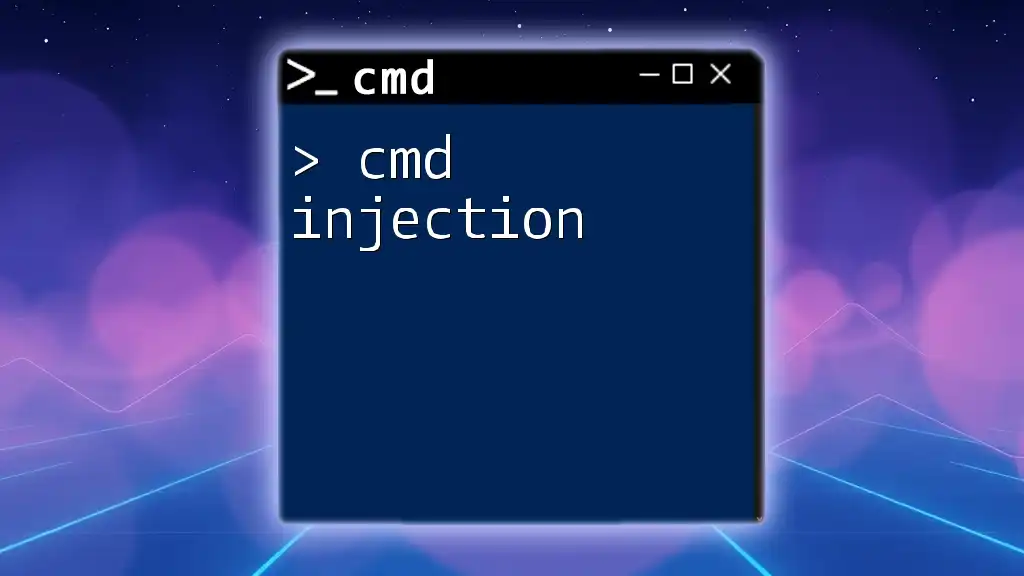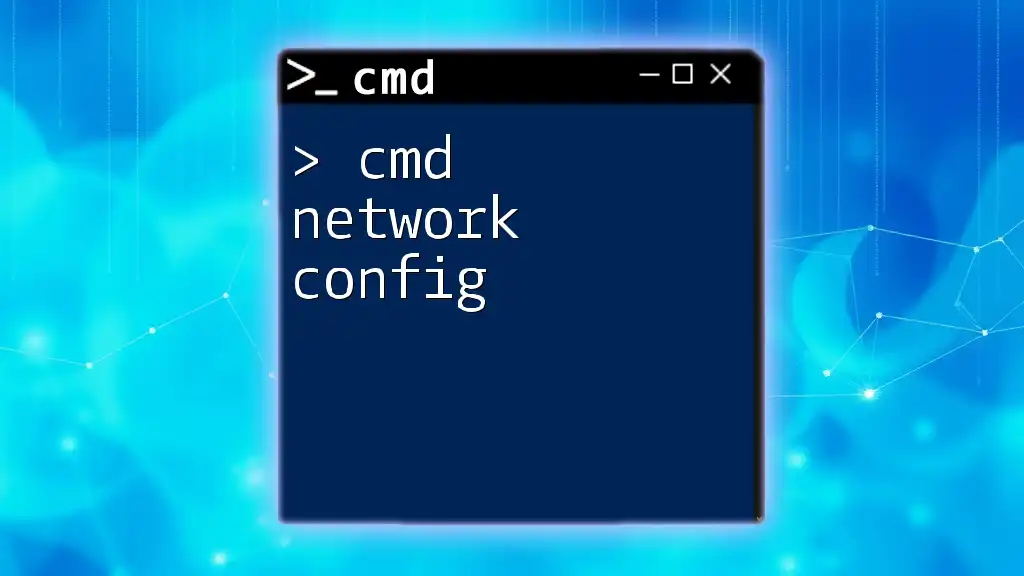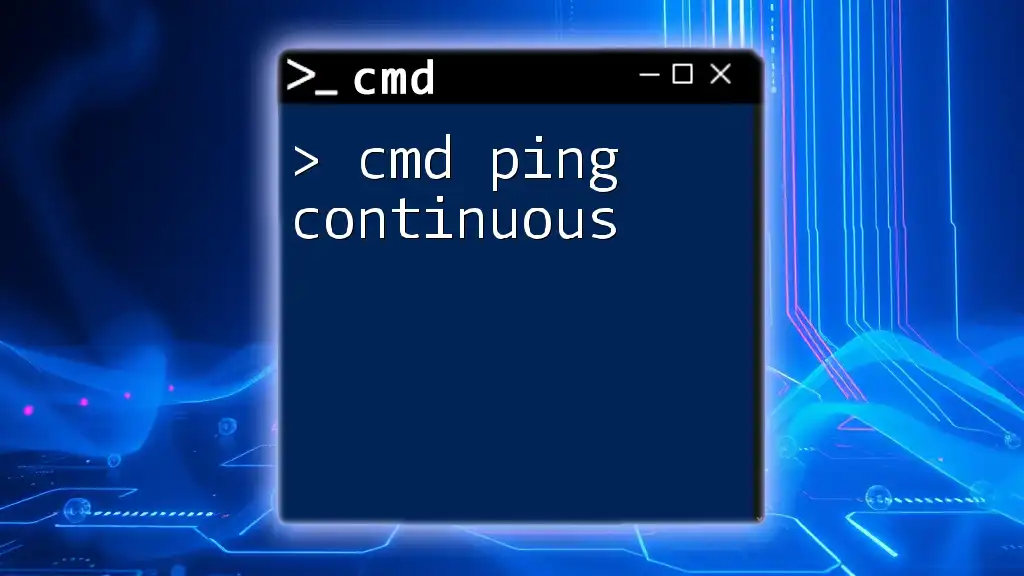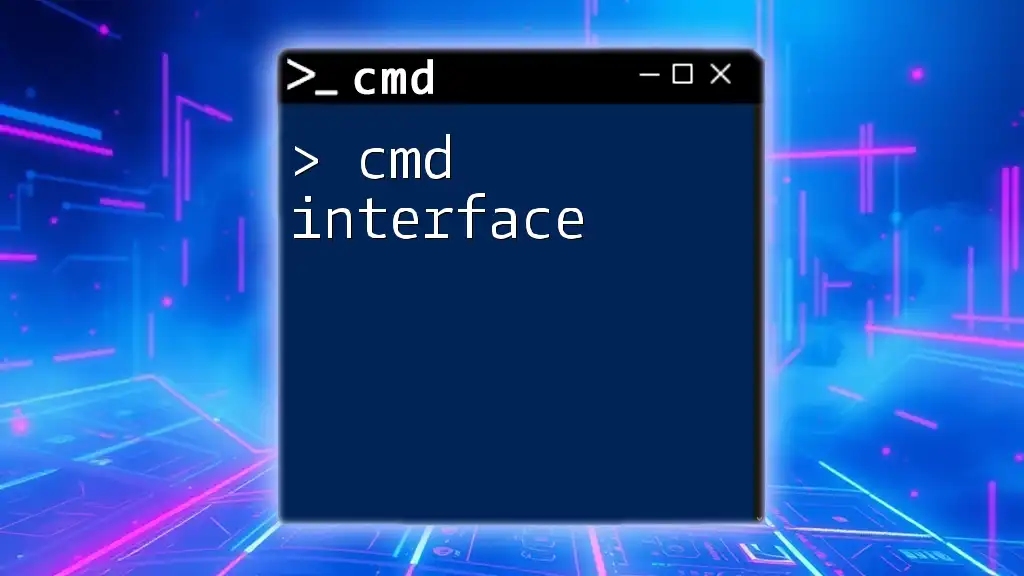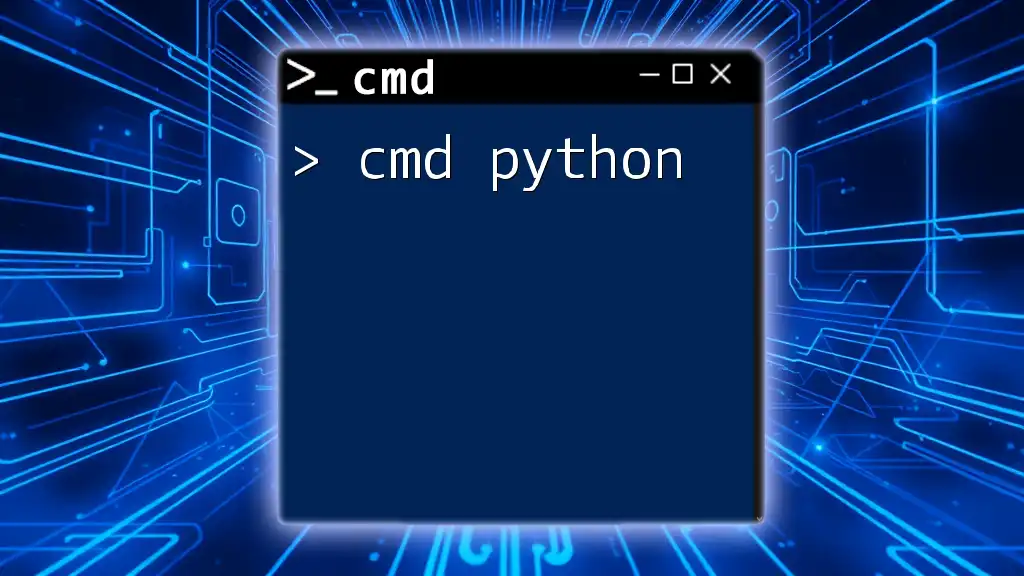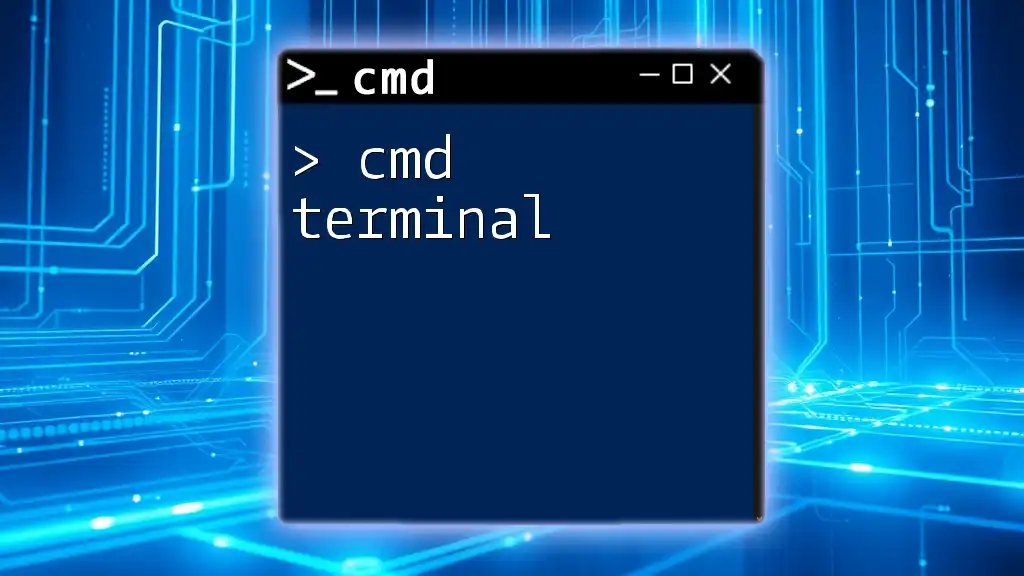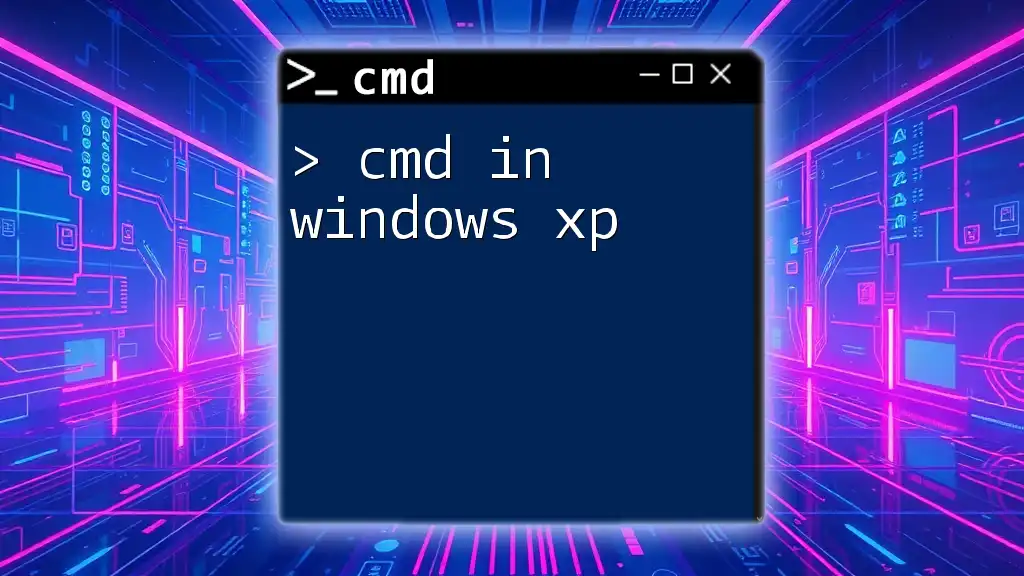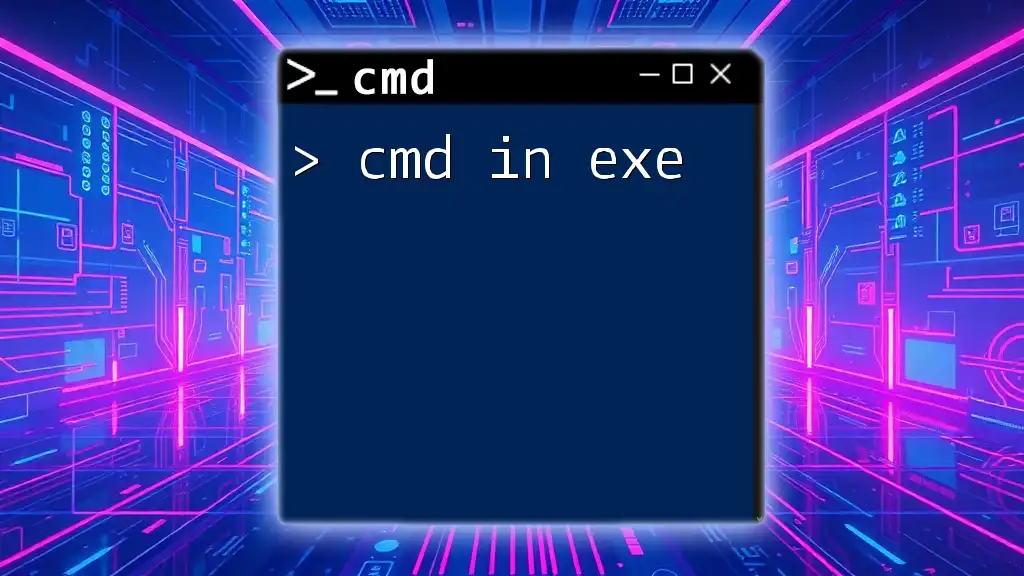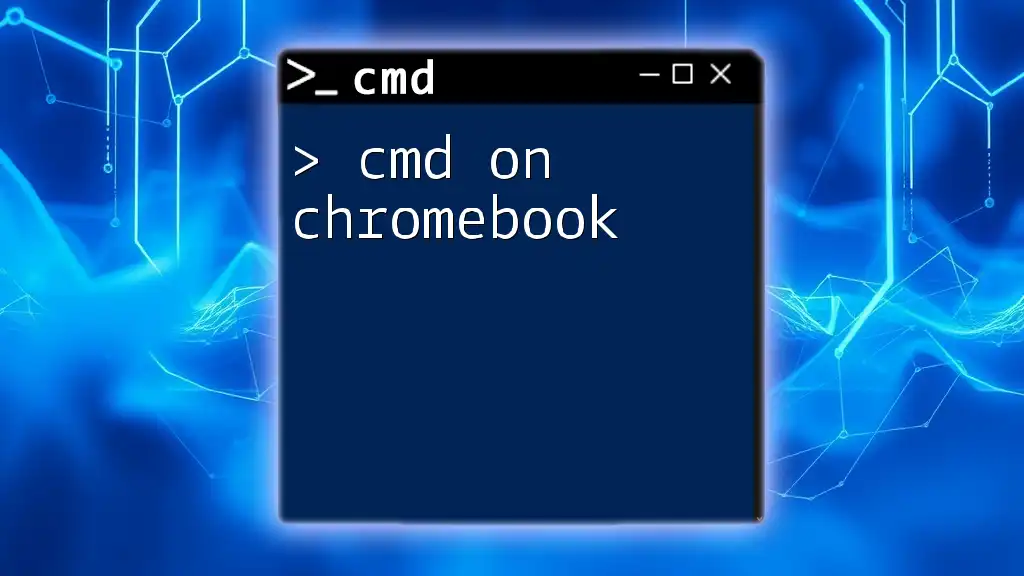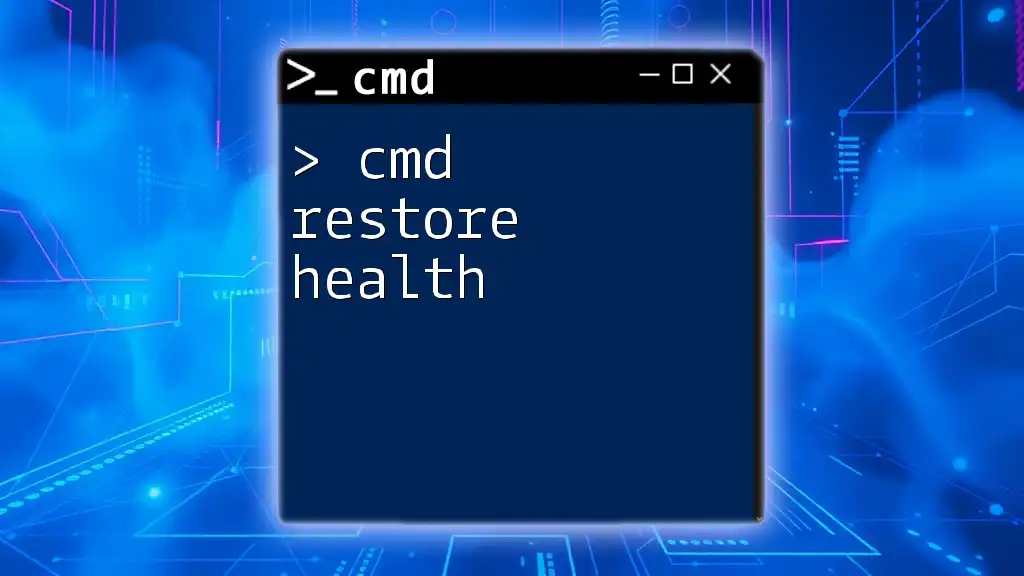CMD injection refers to the malicious practice of including unauthorized commands within a program's input without proper validation, which can lead to execution of those commands on the system.
ping 127.0.0.1 && echo Inspected CMD Injection
What is CMD Injection?
CMD Injection is a type of security vulnerability that allows an attacker to execute arbitrary commands on a host operating system via a vulnerable application. It occurs when an application fails to properly handle or sanitize user-supplied input, inadvertently allowing users to inject system commands that the application will execute. Understanding CMD Injection is essential due to its potential impact on both the integrity and availability of the systems involved.
Given that command execution can lead to unauthorized access and control, it is crucial for developers and system administrators to be aware of these vulnerabilities when designing and maintaining their systems.
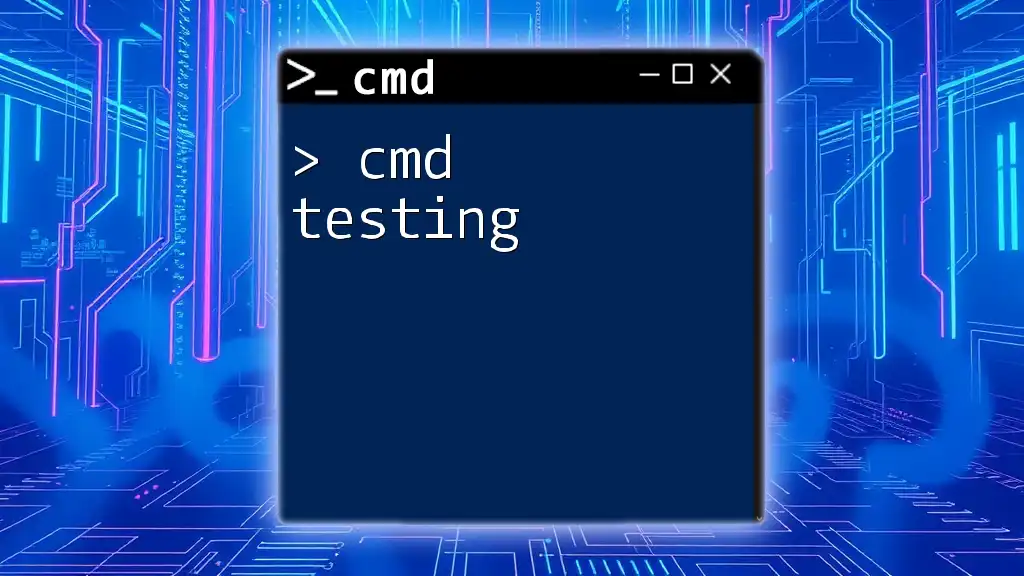
How CMD Injection Works
Understanding the Vulnerability
At the heart of CMD Injection is the interaction between user input and system commands. When an application takes user input and includes it in a command execution process without adequate validation or sanitization, it opens the door for attackers. For instance, if an application allows a user to specify a filename and then uses that filename within a command, an attacker could input malicious content, resulting in unexpected command executions.
Example:
dir example.txt
If an attacker enters the input as follows:
example.txt & del C:\important_file.txt
The resulting command run by the system becomes:
dir example.txt & del C:\important_file.txt
This demonstrates how simple user input can lead to catastrophic consequences if not handled appropriately.
Common Use Cases
CMD Injection vulnerabilities often present themselves in various applications, particularly those that execute commands based on user input. For instance:
- Web applications that process data supplied by users.
- File upload features that accept filenames and use them in commands.
A well-known scenario is a web-based hosting interface that allows users to list their directories using a command that lacks input validation. This can open the door for attackers to execute system commands that could, for example, delete critical files.
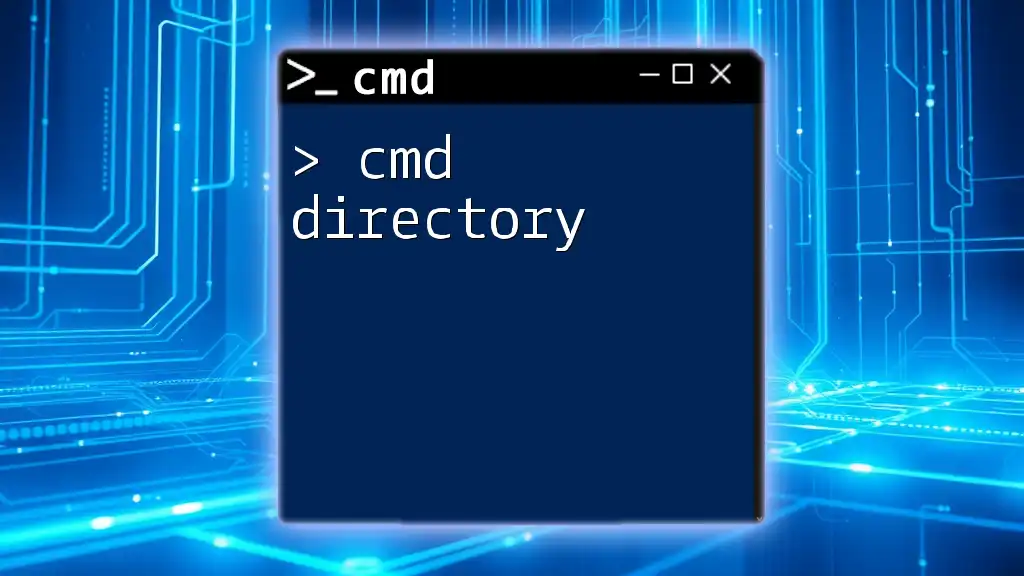
Types of CMD Injection Attacks
Blind CMD Injection
In blind CMD Injection, the attacker cannot see the output of the commands they execute due to a lack of error feedback or any visible responses from the application. It requires more a strategic approach, typically by inferring whether the command succeeded based on changes in the application's behavior or response times.
Scenario Example:
An attacker may try to inject a command to check the system's version. The input might be structured as follows:
&& ver
If there’s no output but the application’s performance changes, the attacker might conclude they successfully executed a command.
Error-Based CMD Injection
Error-Based CMD Injection takes advantage of error messages returned by the application after a failed command execution. By analyzing these error messages, attackers can gather valuable information about the system and refine their injection attacks.
Code Snippet Example:
An attacker might input:
; ls non_existing_directory
If the application returns an error like "No such file or directory: non_existing_directory," the attacker learns about the environment, allowing them to tailor future commands to be more effective.
Union-Based CMD Injection
Union-Based CMD Injection is a technique where the attacker uses the UNION SQL operator to combine results from different queries. This type of attack is particularly prevalent in web applications that utilize SQL queries and can manipulate those to execute system commands.
Code Example:
Consider an application that takes two inputs:
www.example.com/somepage?id=1 UNION SELECT username, password FROM users
With appropriate privileges, this can expose sensitive data from the database, demonstrating a severe vulnerability.
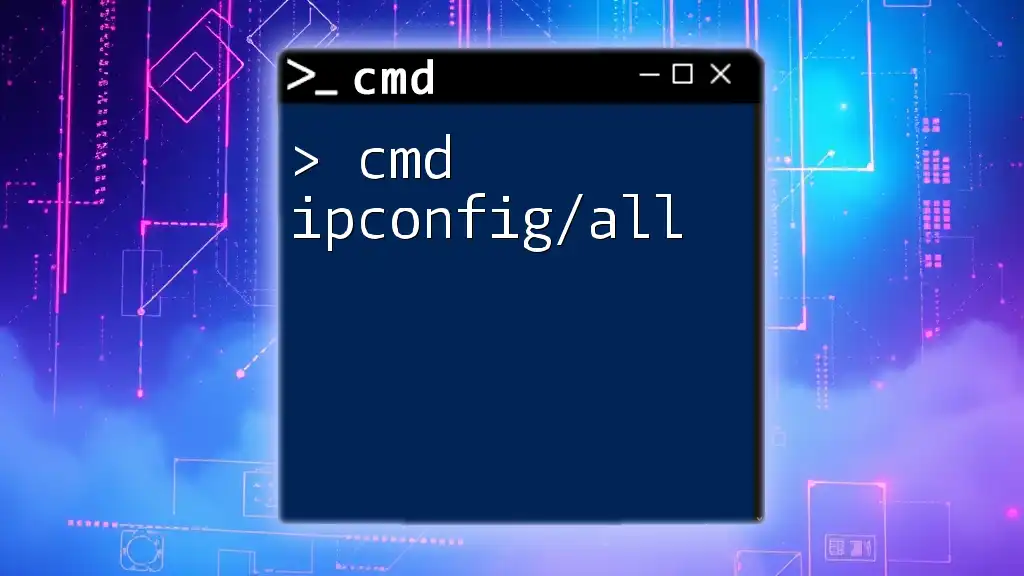
Protecting Against CMD Injection
Input Validation and Sanitization
One of the foremost defenses against CMD Injection is implementing rigorous input validation and sanitization. Ensure that user input is strictly checked against defined formats or criteria before being processed. This can be done using whitelist validation techniques which only allows expected input patterns.
Example of Effective Validation:
To ensure a filename contains only alphanumeric characters, you can enforce:
import re
def is_valid_filename(filename):
return re.match("^[a-zA-Z0-9_.-]*$", filename) is not None
This function allows only specific characters and prevents injection attacks.
Use of Escape Characters
Using escape characters is another way to mitigate CMD Injection. By escaping characters that have special meanings in command-line contexts, developers can prevent unexpected behavior.
Example: If a user input needs to be executed in a command, one can do this:
safe_command = f"cmd.exe /c dir {escape(user_input)}"
Limit User Privileges
Applying the principle of least privilege is crucial in defending against CMD Injection vulnerabilities. Applications should run with the minimal set of permissions required to function. This means that even if an attacker successfully executes a command, the scope of what they can do is drastically minimized.
Regular Security Audits and Code Reviews
Frequent assessments of code, especially those that handle user inputs, can help identify and fix vulnerabilities before they can be exploited. Implement a robust code review process that emphasizes security practices, ensuring that developers are aware of the risks associated with CMD Injection.
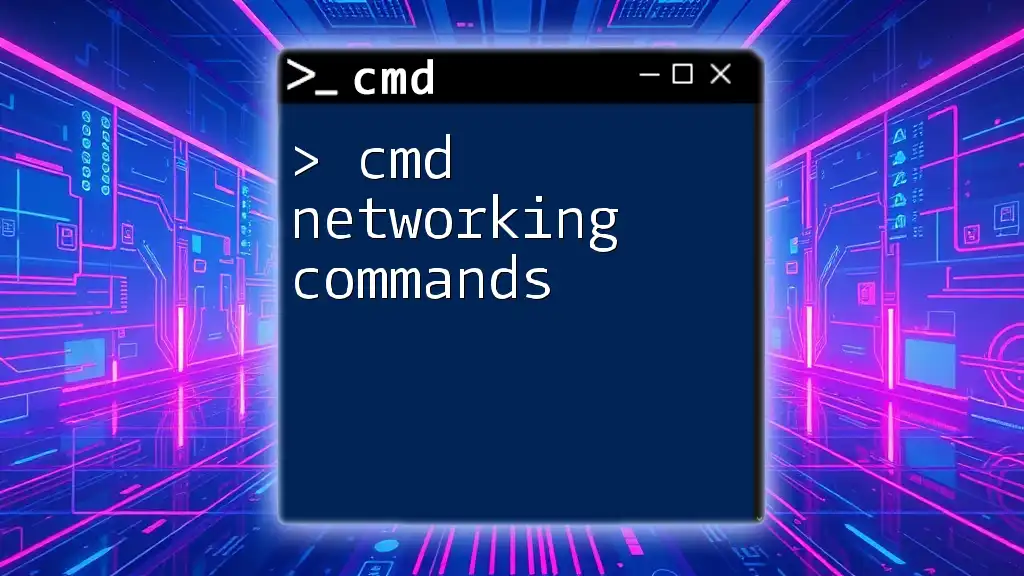
Detecting CMD Injection Vulnerabilities
Common Signs of CMD Injection
Recognizing signs of CMD Injection include observing unusual behaviors, such as unexpected errors, inconsistent application responses, or even unexplained system modifications. Monitoring logs for suspicious command executions can also shed light on potential injection attempts.
Tools and Techniques for Detection
Several tools can aid in scanning for CMD Injection vulnerabilities. Tools like Burp Suite and OWASP ZAP provide comprehensive assessments, enabling security teams to identify weaknesses in their applications.
Basic Manual Check:
ping example.com & whoami
Analyzing how the application responds to this command can provide insight into potential vulnerabilities.
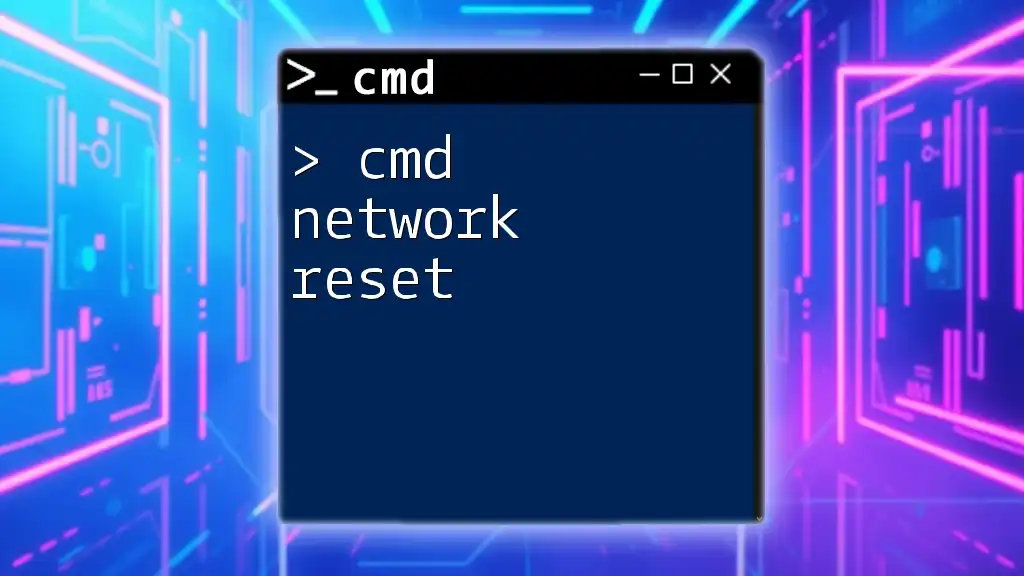
Mitigating CMD Injection Attacks
Implementing Security Headers
Utilizing security headers, such as Content Security Policy (CSP) and X-Content-Type-Options, can help in reducing the attack surface by enforcing strict content rules. This limits the ways in which the application can interact with the system, thereby minimizing CMD Injection risks.
Logging and Monitoring
Establishing logging and monitoring systems is crucial for detecting CMD Injection attempts. Effective logging should include all user commands and their outputs, allowing for real-time analysis and rapid response to any anomalies.
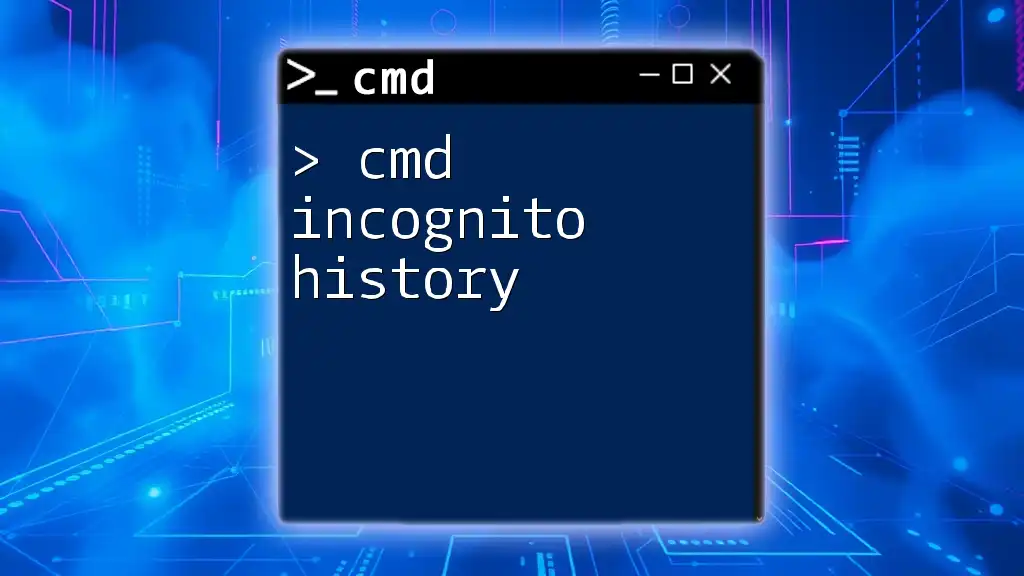
Conclusion
Understanding and mitigating CMD Injection vulnerabilities is essential for any organization that develops or operates applications that utilize user input. By prioritizing input validation, employing least privilege practices, and continuously monitoring for suspicious activity, developers and sysadmins can significantly reduce the risk of exploitation from CMD Injection attacks.
In today's security landscape, recognizing potential threats like CMD Injection and responding proactively is paramount for maintaining the integrity and security of critical systems. Let's prioritize safe coding practices to make our applications resilient against such vulnerabilities.
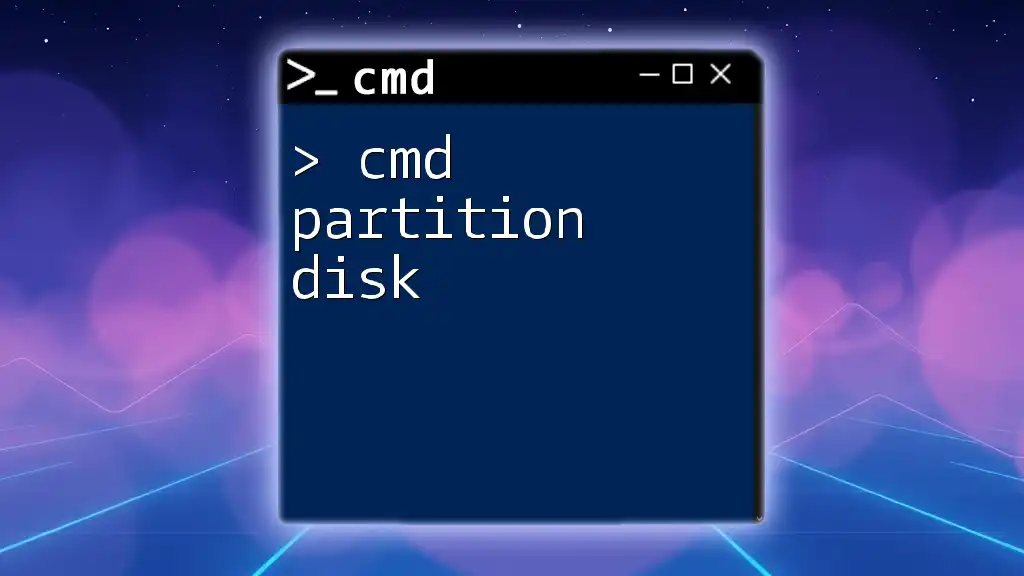
Further Resources
For further exploration of CMD Injection and cybersecurity best practices, consider utilizing the following resources:
- Books and articles focused on cybersecurity fundamentals.
- Online tutorials and courses that delve into CMD commands, secure coding practices, and advanced vulnerability assessment techniques.
By continually educating yourselves and applying best practices, you can help safeguard your applications and systems against CMD Injection and other security threats.

